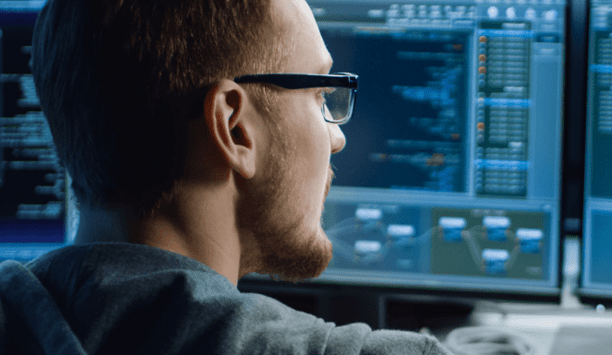Four Years Later, What Is The Lingering Impact Of COVID-19 On Security?
Editor Introduction
The economic fallout of the COVID-19 epidemic was felt in supply chain disruptions, higher prices, and shortages of certain goods. The physical security industry was not spared, although the epidemic also presented opportunities for security companies. Changing access control trends triggered by the pandemic are still reverberating throughout the industry, for example. Four years later, the impact of the pandemic is still being felt in the security market, lingering like the symptoms of "long COVID." We asked this week's Expert Panel Roundtable: Four years after the start of the COVID-19 pandemic, what is its lingering impact on the physical security industry?
Hybrid working is very much here to stay, with data from McKinsey & Company showing that workers, on average, now go to their offices just 3.5 days a week. The pandemic has had a lasting impact on global real estate; office work has rebounded after COVID-19 but attendance is still 30% lower than pre-pandemic norms, according to McKinsey. This brings new challenges for employers. Mobile access via smartphones can play an important role in simplifying and coping with this change because the management is cloud-based, digital, and remote; no need for staff to physically visit an HR or security office to get their ID badge. By combining access control data from door readers with additional location data – using anonymized “identity positioning” information gained from ubiquitous smartphones – organizations can better understand how their workspaces are being used. This could be financial gold dust: Why rent 10,000 sq ft of office space when the numbers demonstrate that 6,000 sq ft will do? Hybrid work also requires that access control systems be top-notch. When offices are full, “bad actors” will be spotted quickly. If a space is half empty, then there’s a high probability they won’t, with individuals free to cause mischief, theft, or damage.
Buying trends have certainly changed since the pandemic, with more consideration given to the availability of personnel and the increased prevalence of touch-free access control. There is also an increased uptake of management software that can ensure sites maintain their security levels in the event of reduced manned guarding levels. The industry has also seen a greater demand for security systems that can be accessed remotely with an increased focus on perimeter security technologies, which would otherwise require dedicated personnel to monitor on-site.
I think we’ll be uncovering the lingering impact of the COVID pandemic for years to come, but of all the effects still reverberating, perhaps the most significant is the shift in how customers and channel partners view their relationships with security manufacturers. The pandemic exposed vulnerabilities in global supply chains, leading to disruptions in the production and distribution of physical security equipment and components. These disruptions strained relationships between manufacturers and their customers as they grappled with supply shortages and delivery delays. Many reassessed their relationships with manufacturers based on their ability to weather the challenges posed by the pandemic, while others started paying greater attention to how – and where - manufacturers source their raw materials. Manufacturers that demonstrated agility in responding to supply chain disruptions, such as shifting production priorities or implementing alternative distribution channels, strengthened their relationships with customers and set new industry standards for delivery during a crisis.
Remote and hybrid work are here to stay. The obvious impact is that a security organization’s role in protecting employees and assets is much harder with the workforce dispersed and not centralized. The more challenging impact is that it’s much harder to justify budget and return on investment (ROI) related to physical security program spending when offices are underpopulated or empty. Using intelligence-driven security technology to provide quantifiable justification for spending can – literally – pay dividends on the investment. Security leaders need to continue evolving security programs from cost centers to programs better aligned with business goals that demonstrate quantifiable value.
During the pandemic, organizations had to shift to remote or hybrid work, which had an almost immediate impact on the physical security industry, forcing it to adapt to new technologies. Physical security has always been one of the core components of a multi-layer defense-in-depth cybersecurity strategy to prevent unauthorized access to sensitive assets. Public and private sector organizations had started using employee biometrics, like fingerprints, to verify identities and grant access to secure areas early on. After COVID-19, with the focus on minimizing the spread of the infection, these identity verification measures transitioned to contactless biometrics, such as facial recognition. Another interesting fallout of the pandemic on the physical security industry is the increasing acceptance of cloud-based or hybrid solutions, over on-prem solutions, thanks to the flexibility offered by remote management.
Looking at the security industry from a healthcare lens, the pandemic ultimately ended up accelerating the evolution of remote healthcare offerings like virtual nursing, tele-ICU, and telesitting – all of which require various physical security technologies to operate effectively. For instance, analytics-equipped network audio and video solutions are needed to enable remote monitoring, two-way audio, and real-time alerts. When integrated with healthcare partner software, these technologies enable nurses to streamline their workflows and intelligently prioritise their tasks. The same solution can also be used for virtual rounding, resource-efficient ICU support, remote medication validation, virtual care consultations, and more. Today’s IP audio and video solutions can integrate seamlessly with the remote systems that healthcare providers increasingly depend on for patient care, providing reliable connectivity, real-time information, and intelligent alerts to enable smarter workflows and better overall patient outcomes – no matter their physical location.
Especially for video surveillance solutions, the COVID pandemic marked a significant turning point in the physical security industry. At the beginning of the decade, organizations were increasing public safety by leveraging video technology for safety and security use cases, forensic investigation, and real-time incident intervention in facilities, on campuses, and in cities. When the pandemic hit, the emphasis notably shifted from physical safety to public health: The responsibility of protecting public spaces and their visitors became weightier with the added pressure of enforcing public health standards and – in some areas – legal mandates regarding contact tracing, social distancing, mask-wearing, and more. Decision makers suddenly were forced to maximize their existing technology stack and consider how to achieve new critical goals with existing solutions efficiently and cost-effectively. Though technology providers have long touted the benefits of their solutions beyond safety and security, organizations became immediately receptive to exploring how past technology investments could be leveraged for mandate compliance, staff and visitor health and safety, and business continuity. As such, the COVID pandemic sparked a revolution in physical security solutions, accelerating the adoption and application of the security tech stack beyond physical security and public safety.
From a domestic market perspective, there’s no doubt that we witnessed a growth in the sales of domestic kits during the pandemic. Throughout the lockdown period, the installation community saw home improvements emerge as a trend, where homeowners undertook domestic projects, such as securing their premises, to protect their families and property. From a commercial perspective, there’s been no let-up even since the start of the COVID pandemic, as many of our products are installed on key sites, which include hospitals that need to be operational 24/7. Since the end of the lockdown, the domestic UK market has leveled off. However, commercial projects continue unabated and in particular, those projects that require automatic bollards and barriers.
Despite being more than four years since the start of the COVID-19 pandemic, elevated levels of stress and anxiety from the pandemic haven’t receded. Instead, we’re experiencing a new “normal” level of chronic anxiety. Some employees continue to have heightened perceptions of risk, and they want their companies to act. As a result, companies may find themselves under pressure to complete an increasing number of threat assessments and to do so rapidly. To accomplish this, security teams will need to work closely with leadership, human resources, employee assistance programs, and communications personnel to manage employee expectations, mediate disputes, and navigate this new territory. Especially with the passage of Senate Bill 553, which requires California employers to take steps to prevent and respond to workplace violence, the security industry will see the increased adoption of threat assessment and management procedures to address potentially harmful situations.
Editor Summary
The residual impact of COVID-19 can be seen in the growth of hybrid work patterns and a resulting lower occupancy of office buildings. An emphasis on touch-free access control is another continuing consequence. Our Expert Panelists also see a shift in how security systems, including video, are being used beyond the core mission of public safety. Finally, there is an enduring shift in how partners view their channel relationships, more conscious now of vulnerabilities in the global supply chain.
- Related links
- Networkable Access control readers
- Magnetic Stripe Access control cards/ tags/ fobs
- Biometric Access control software
- Biometric Access control systems & kits
- ANPR Software Video Surveillance software
- Standalone Access control systems & kits
- Card Access control cards/ tags/ fobs
- Networked Access control systems & kits
- PC-based Access control readers
- Mifare Access control cards/ tags/ fobs
- Card Access control software
- Biometric Access control readers
- Card Swipe Access control systems & kits
- Control Software Video Surveillance software
- Proximity Access control cards/ tags/ fobs
- Standalone / Networked Access control systems & kits
- Contact Access control software
- Card Swipe Access control readers
- Fob Access control cards/ tags/ fobs
- Detection Software Video Surveillance software
- Standalone Access control readers
- PC-based Access control systems & kits
- Smart Card Access control systems & kits
- Mifare Access control software
- Standalone / Networkable Access control readers
- Smart Card Access control cards/ tags/ fobs
- Tag Access control cards/ tags/ fobs
- Drawing Software Video Surveillance software
- Infrared Access control readers
- IP Surveillance Software Video Surveillance software
- Proximity Access control software
- Wiegand Access control cards/ tags/ fobs
- Contact Access control systems & kits
- Central Monitoring Option Access control software
- Smart Card Access control software
- Magnetic Stripe Access control readers
- Management Software Video Surveillance software
- Infrared Access control systems & kits
- Monitoring Software Video Surveillance software
- Proximity Access control readers
- RFID Access control readers
- Surveillance Software Video Surveillance software
- Smart Card Access control readers
- Door Monitoring Option Access control software
- DVR Interface Access control software
- Face Recognition Software Access control software
- ID Badging Software License Access control software
- License Access control software
- Management Systems Upgrade Access control software
- Visitor Management tool Access control software
- Axis Communications Video Surveillance software
- Axis Communications Access control software
- Gallagher Access control software
- Gallagher Access control systems & kits
- HID Access control software
- Progeny Access control software
- Progeny Access control systems & kits
- Axis Communications Access control readers
- Gallagher Access control readers
- HID Access control readers
- Progeny Access control readers
- Gallagher Access control cards/ tags/ fobs
- HID Access control cards/ tags/ fobs
- Progeny Access control cards/ tags/ fobs
Expert commentary
Security beat
Security bytes
- Getting To Know Dan Grimm, VP And General Manager Of Computer Vision At RealNetworks
- Big Wins And The Importance Of Showing Up: Insights From SecurityInformed.com Editor Larry Anderson
- Setting Goals, Business Travels And Radioactivity: Success Secrets From Tiandy's John Van Den Elzen
- Getting To Know Jeff Burgess, President/CEO At BCDVideo
5 Surprising Findings From OT Vulnerability Assessments
DownloadMulti-Residential Access Management And Security
DownloadGuide For HAAS: New Choice Of SMB Security System
DownloadHikvision: Solar Powered Product Introduction + HCP
DownloadFacial Recognition
DownloadVerkada TD52 Cloud-Based Video Intercom
exacqVision IP08-64T-R1XW-E X-Series 1U Rdnt IP NVR 64TB RAID5 Windows OS with 8 IP Ent Lic
Climax Technology TouchPanel-3 7” Color Graphic Touchscreen Panel

























